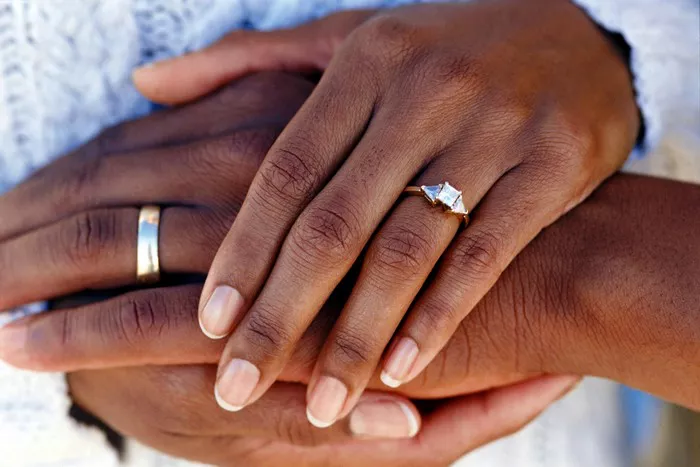The wedding ring market is experiencing a materials renaissance as couples increasingly reject traditional gold and platinum in favor of unconventional substances that better reflect their personalities, values, and lifestyles. The 2025 Global Jewelry Trends Report revealed that 42% of couples are now choosing alternative materials for their wedding bands, up from just 15% in 2015. This shift represents more than just aesthetic preference—it’s a fundamental reimagining of what wedding jewelry can and should be.
Titanium and tungsten continue to dominate the men’s alternative market due to their incredible durability and modern aesthetic, but newer materials are gaining rapid traction. Ceramic rings, once considered too brittle, have been reengineered with zirconium composites to create scratch-resistant bands available in vibrant colors impossible with traditional metals. Meteorite inlays—actual fragments of space rock—have become particularly popular among science enthusiasts, with some jewelers now offering certificates of authenticity tracing the material’s cosmic origin.
The most fascinating development comes from sustainable material innovations. Companies like Tree Ring and Twig are creating beautiful bands from reclaimed wood stabilized with eco-friendly resins. Others are pioneering rings made from recycled electronics (gold extracted from computer components), ocean plastic, or even compressed carbon captured from air pollution. These environmentally conscious options resonate strongly with climate-aware couples who want their symbols of love to align with their ecological values.
Cultural shifts are also driving material diversity. Many couples are selecting rings that reflect their hobbies or professions—guitar string rings for musicians, Damascus steel for bladesmiths, or even dinosaur bone inlays for paleontology enthusiasts. The common thread is personal meaning trumping traditional conventions. As jewelers continue pushing material boundaries—with labs now developing graphene-infused bands and other space-age composites—the wedding ring’s evolution from standardized symbol to highly personal statement appears unstoppable.


